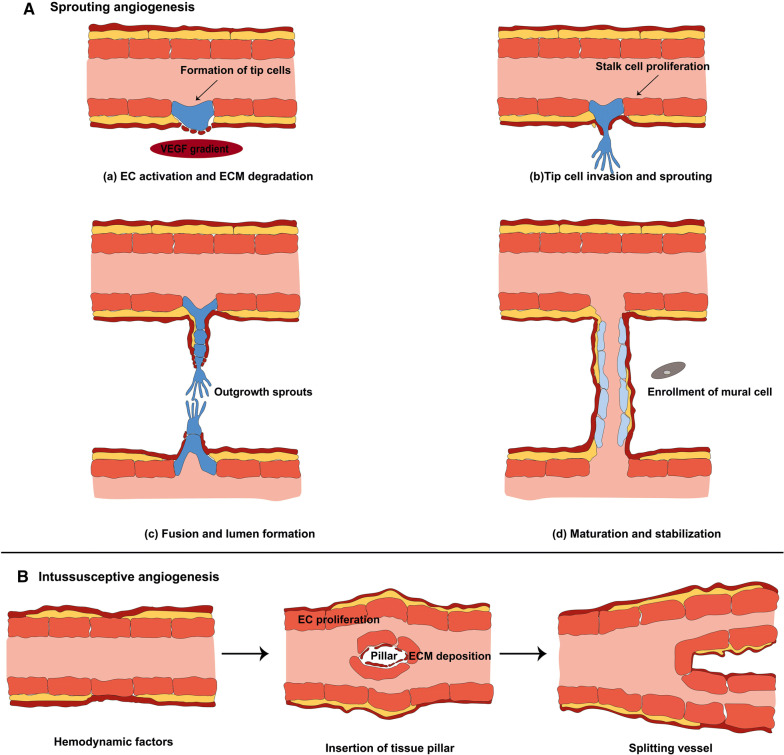Fig. 1.
Schematic model of sprouting angiogenesis (A). Angiogenesis is regulated by the balance between pro-angiogenic and anti-angiogenic factors. Initiation of angiogenesis requires the degradation of the extracellular matrix and activation of some endothelial cells as tip cells (a). As shown, tip cells are characterized by filopodia and migratory behavior toward angiogenic factors such as VEGF, while stalk cells which support formation of new network, are characterized by their high proliferative capacity (b). Different sprouts connect with each other by tip cells to form lumen (c), and after formation of new vessel, endothelial cells undergo quiescence followed stabilization and maturation by mural cells and the extracellular matrix deposition (d). Intussusceptive angiogenesis (B). The splitting of vessels through the inclusion of tissue pillars is a divide mechanism that results to the development of blood vessels. The detailed mechnismds involve in this type of angiogenesis are poorly known

